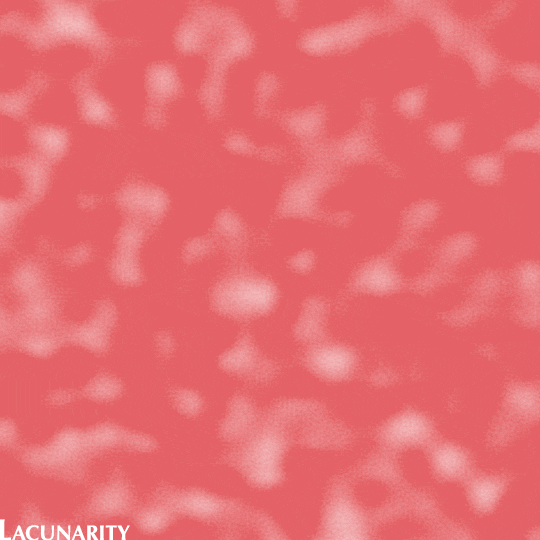
Lacunarity is the measure of gaps in patterns. A pattern with more or larger gaps has high lacunarity, a pattern with fewer or smaller gaps has low lacunarity.
Benoit Mandelbrot coined the term in his work with fractals. As it turns out, measuring lacunarity has a number of real-world applications, but for our purposes here we’re mostly interested it as one of the major measurements of fractals.
Lacunarity measures how quickly the frequency changes for each successive octave. It’s actually better to avoid round numbers in setting lacunarity for many noise functions; transcendental numbers are less likely to show obvious repeating patterns.
